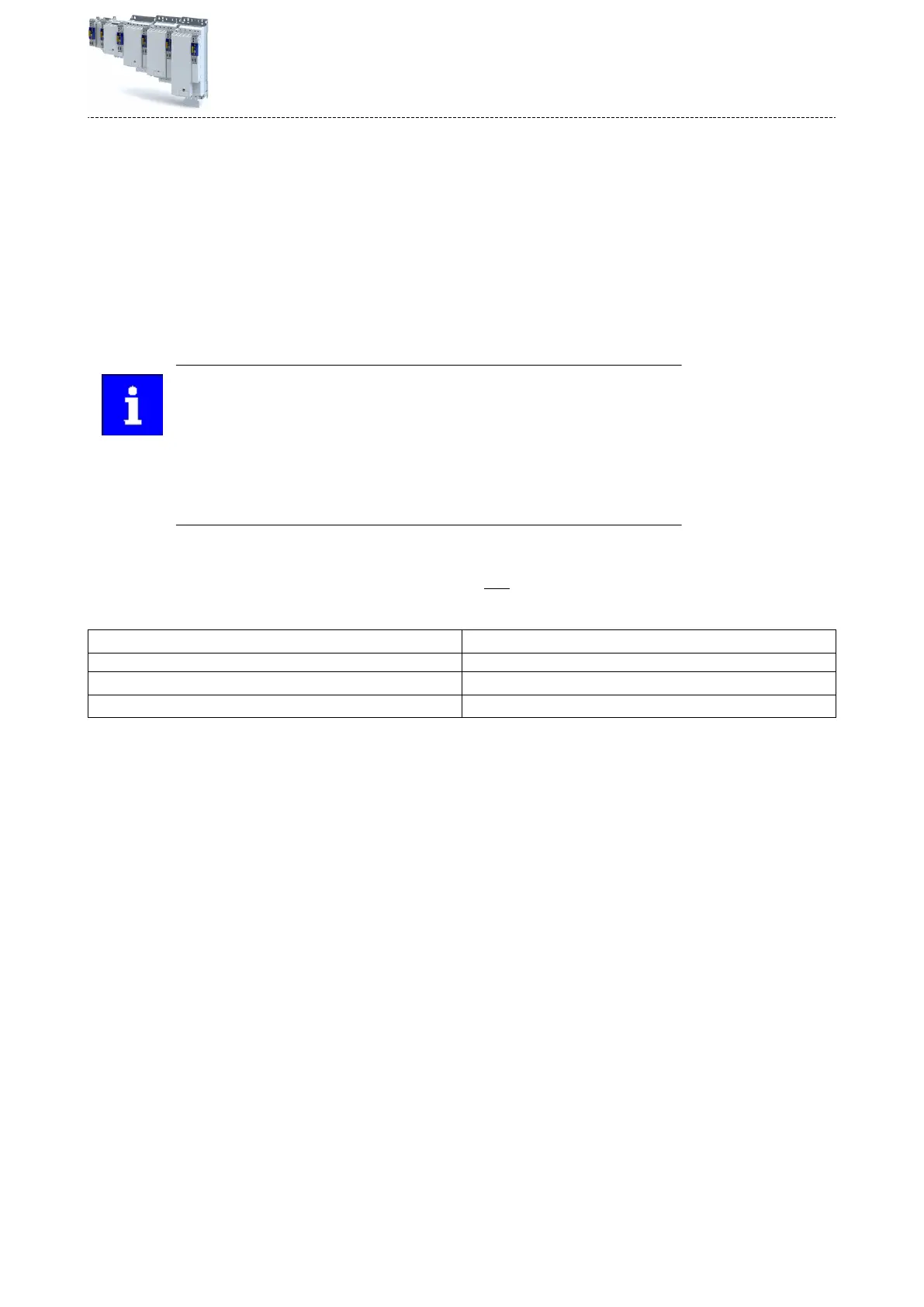13.6.5.6 PSM
eld weakening controller
The inverter control enables a synchronous motor to be operated outside the voltage range. If
a motor is selected in the »EASY Starter«, the control is parameterised automacally.
Improve the transion from the base speed range to eld weakening by acvang the current
controller: feedforward control parameter. 40x2941
•
The curr
ent controller precontrol is dened via the following parameters:
•
Mot
or parameter: stator resistance 40x2C01:002
•
Motor parameter: stator leakage inductance 40x2C01:003
•
Motor parameter (PSM): back EMF constant 40x2C03:001
•
If you want to operate a third-party motor in the eld weakening range, you have to deter-
mine the par
ameters previously menoned
Operaon of synchronous motors outside the voltage range:
If pulse inhibit is se
t in the inverter, e.g. in case of an inverter disable or an error,
the DC bus is loaded in accordance with the current speed (see equaon).
• At high speed and outside the voltage range, the terminal voltage can be
higher than the mains voltage!
• In order to prevent the DC bus from being loaded impermissibly high, connect
a brake chopper to the DC bus!
The terminal voltage corresponds to the following equaon
V
K
Terminal voltage
n Speed
V
r
ated
Rated mains voltage
n
m
Rated motor voltage
•
Mains sengs: rated mains voltage 40x2540:001
•
Mot
or parameter: rated speed 40x2C01:004
Delaying the buildup of eld weakening
With the default seng (5 %), eld weakening is
iniated, thus ensuring that a punctual
buildup of the eld weakening current shortly before the voltage threshold is reached.
In the case of synchronous motors, seng the Voltage reserve range parameter may bring
about a delayed start of eld weakening for synchronous machines, e.g in order to slightly
reduce the thermal load of the motor. 40x29E4
Conguring the motor control
Opons for opmising the control loops
Mot
or control sengs
247

